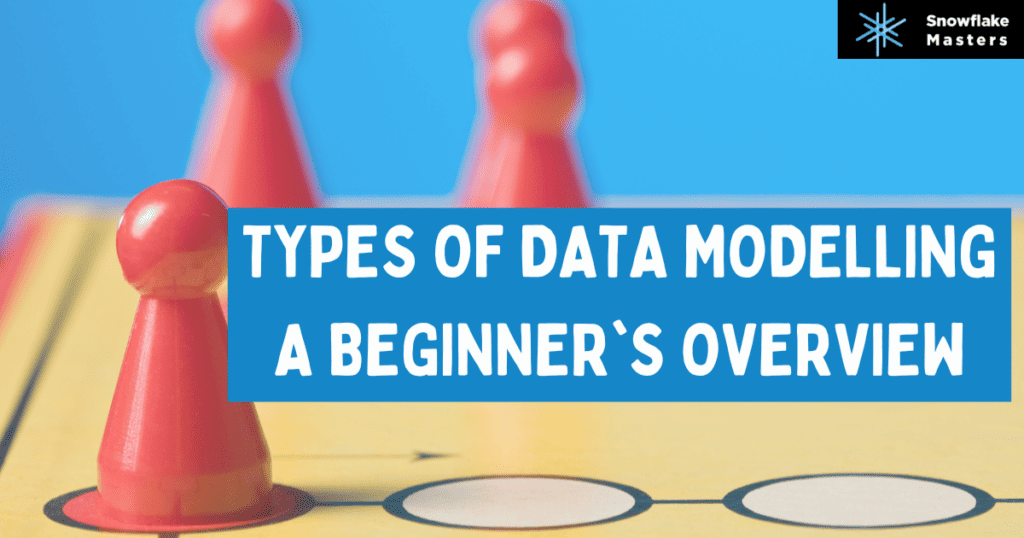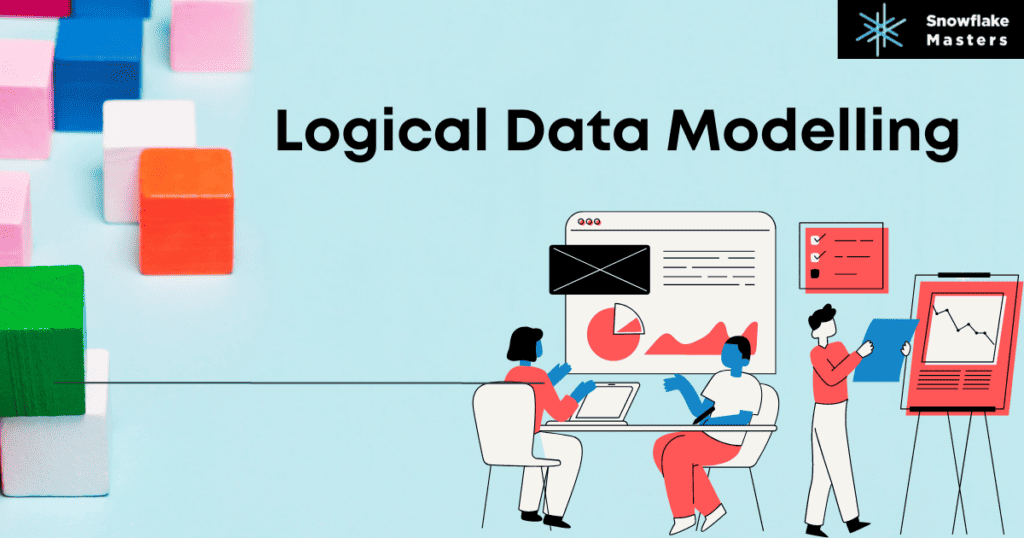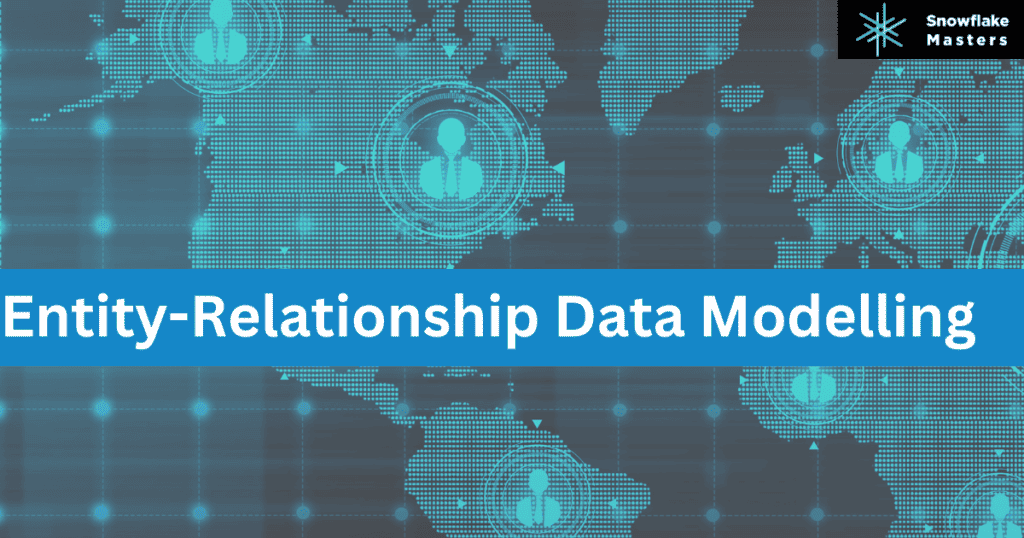Types of Data Modelling A Beginner's Overview
Types of Data Modelling

Data modeling is creating a visual representation of data and its relationships to other data. It is an essential part of database design and helps ensure data is organized, accurate, and accessible. This article will provide a beginner’s overview of the different types of data modelling.
Table of contents
- What is data modeling?
- data modeling examples
- Conceptual Data Modelling
- Logical Data Modelling
- Physical Data Modelling
- Object-Oriented Data Modelling
- Dimensional Data Modelling
- Entity-Relationship Data Modelling
- NoSQL Data Modelling
- Graph Data Modelling
- Data Modelling Tools
- Conclusion
What is data modeling?
Data modeling is creating a conceptual representation of data and its relationships to other data. It is a critical component of database design that helps ensure data accuracy, consistency, and efficiency.
Data modeling involves identifying the different types of data stored in a database, including entities, attributes, and relationships between entities. These data elements are then represented using symbols and notations, such as entity-relationship diagrams, UML diagrams, and flowcharts.
The goal of data modeling is to create a model that accurately represents the data and its relationships and that can be used to design a database. These involve creating a conceptual model, a logical model, and a physical model.
The conceptual model is a top view of the data without understanding how it will be stored or implemented. The logical model is a detailed data model, including its structure, relationships, and constraints. The physical model is a detailed model of how the data will be stored in a database.
Data modeling is essential because it helps ensure data is organized, accurate, and accessible. It also helps ensure that databases are optimized for performance and scalability. By understanding the different types of data modelling, businesses can choose the best approach for their specific needs and create a database optimized for performance and scalability.
Data modeling examples
There are several data modeling examples, each suited to different types of data and databases. One typical example is entity-relationship modeling, representing data in a relational database. This type of modeling involves creating a model that represents entities, attributes, and relationships between entities. For example, a company might use entity-relationship modeling to represent customers, orders, and products in a database.
Another example of data modeling is dimensional modeling, which represents data in a data warehouse. This type of modeling involves creating a model optimized for reporting and analysis, focusing on dimensions and measures. For example, a retail company might use dimensional modeling to represent sales data by product, store, and period.
Object-oriented modeling is another example of data modeling used to represent complex data structures. This type of modeling is based on the principles of object-oriented programming and uses objects, classes, and inheritance to represent data. For example, a software development company might use object-oriented modeling to represent software components and their relationships.
Data modeling is a crucial aspect of database design and management, and several different types of modeling techniques can be used depending on the specific needs of a business or organization.
Conceptual Data Modelling
Conceptual data modeling is the first stage of data modeling. It involves creating a high-level view of the data without understanding how it will be stored or implemented. The goal is to design a conceptual model that is easy to understand and can be used to communicate with stakeholders.
Conceptual data modeling is beneficial for businesses just starting to collect data and need to understand their data, how it is related, and how it can be used to inform decision-making.
This modeling phase focuses on defining the main entities and the relationships between them. For example, in a retail business, the main entities might include Customers, Orders, and Products. The relationships would show how customers place orders and how orders include products. This clear and straightforward representation helps everyone involved to see the bigger picture and understand how different pieces of data interact.
By starting with a conceptual data model, businesses can ensure that they are asking the right questions and collecting the most relevant data from the outset. This foundational understanding can guide subsequent stages of data modeling and system development, ensuring that the final data structure supports the business’s needs and goals. It also helps avoid costly changes later on by getting early buy-in from all stakeholders.
Logical Data Modelling
Logical data modeling is the next stage of data modeling. It involves creating a detailed model of the data, including its structure, relationships, and constraints. The goal is to create a logical model that accurately represents the data and can be used to design a physical database.
Logical data modeling is beneficial for businesses that clearly understand their data and how it is related but must design a database that can store and retrieve it efficiently.

Physical Data Modelling
Physical data modeling is the final stage of data modeling. It involves creating a detailed model of how the data will be stored in a database. The goal is to create a physical model that is optimized for performance and can be implemented in a database management system.
Physical data modeling is beneficial for businesses that clearly understand their data and how it is related and must design a database that can store and retrieve it efficiently.
Dimensional Data Modelling
Dimensional data modeling is a type of data modeling that is used to represent data in a data warehouse. It involves creating a model optimized for reporting and analysis, focusing on dimensions and measures. Dimensional data modeling is commonly used in business intelligence and analytics.
The world data warehousing market is expected to increase from $15.8 billion in 2020 to $34.7 billion by 2025, according to MarketsandMarkets. The increasing need for data analytics and the need for businesses to make decisions based on data have caused this growth.
The rising popularity of cloud-based database management systems and the necessity for businesses to track and analyze vast volumes of data contribute to this growth. Dimensional data modeling benefits businesses that must analyze vast data and extract insights to inform decision-making.
Entity-Relationship Data Modelling
Entity-relationship data modeling is a type of data modeling that is used to represent data in a relational database. It involves creating a model representing entities, attributes, and relationships between entities. Entity-relationship data modeling is the most commonly used type of data modeling in database design.
According to a Zion Market Research examination, the global relational database management systems market will grow from $10.2 billion in 2019 to $18.5 billion by 2026. The rising popularity of cloud-based database management systems and the necessity for businesses to track and analyze vast volumes of data contribute to this growth.

Data Modelling Tools
There are many data modeling tools available that can help simplify the data modeling process. Some popular tools include ERwin, Toad Data Modeler, and Oracle SQL Developer Data Modeler.
Data modeling tools are handy for businesses that must create complex data models and want to streamline the data modeling process.
Conclusion
Data modeling is essential to database design and helps ensure that data is organized, accurate, and accessible. There are many different types of data modelling, each with strengths and weaknesses. By understaning the different types of data modelling, you can choose the best approach for your specific needs and create a database optimized for performance and scalability.
According to a report by Grand View Research, the global data modeling market is expected to grow from $3.6 billion in 2020 to $11.4 billion by 2025
This growth is driven by the rising amount of data generated by businesses and individuals and the need for businesses to manage and analyze that data.
In conclusion, data modeling is a complex process that requires careful planning and consideration. By understanding the different types of data modelling, you can make informed decisions about how to design your database and ensure your data is organized, accurate, and accessible.
FAQ’s
Data modeling is creating a visual representation of data and its relationships to other data. It is an essential part of database design and helps ensure data is organized, accurate, and accessible.
Data modelling is essential because it helps ensure data is organized, accurate, and accessible. It also helps ensure that databases are optimized for performance and scalability.
The different types of data modelling include conceptual, logical, physical, object-oriented, dimensional, entity-relationship, NoSQL, and graph data modeling.
Conceptual data modeling is the first data modeling stage and involves creating a high-level view of the data. Logical data modeling is the next stage and involves creating a detailed model of the data. Physical data modeling is the final stage and involves creating a detailed model of how the data will be stored in a database.
Object-oriented data modeling is a type of data modeling that is used to represent complex data structures. It depends upon the principles of object-oriented programming and uses objects, classes, and inheritance to represent data.
Dimensional data modeling is a type of data modeling that is used to represent data in a data warehouse. It involves creating a model optimized for reporting and analysis, focusing on dimensions and measures.
Entity-relationship data modeling is a type of data modeling that is used to represent data in a relational database. It involves creating a model representing entities, attributes, and relationships between entities.
NoSQL data modeling is a type of data modeling that is used in non-relational databases. It involves creating a model optimized for performance and scalability, focusing on horizontal scaling.
Graph data modeling is a type of data modeling that is used to represent data in a graph database. It involves creating a model that represents nodes and edges, focusing on relationships between data.
Some popular data modeling tools include ERwin, Toad Data Modeler, and Oracle SQL Developer Data Modeler. These tools can help simplify the data modeling process and streamline database design.
